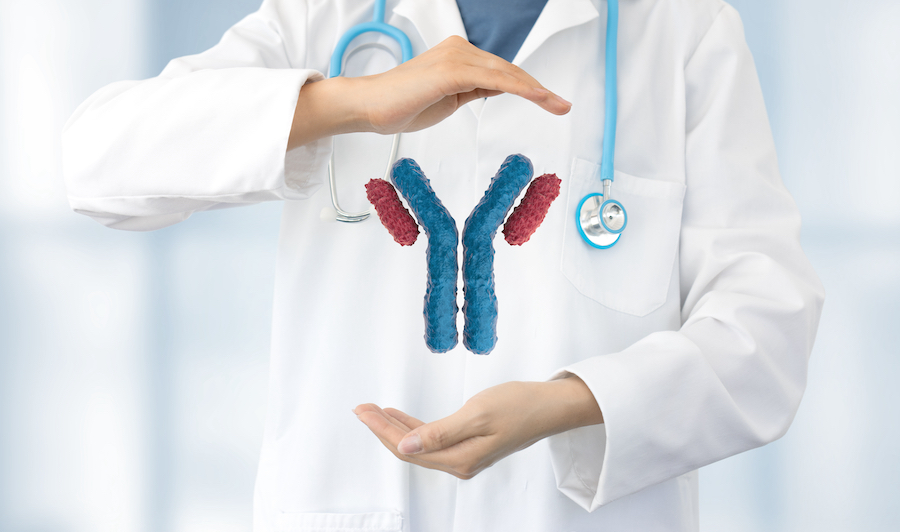Ready to seek help for drugs and alcohol? We guide you through the rehab-search process, from how long to stay, to what insurance covers, to choosing the right treatment approach—for you
This is Part 1 in TreatmentMagazine.com’s six-part guide on How to Find a Addiction Treatment Center. Future sections include: an overview of treatment therapy approaches, how to navigate insurance, how to decode the jargon, expert tips for successful recovery and which outcome results to track.
By William Wagner
The big question has finally hit your brain: Am I an addict—or alcoholic?
Or, is my son or my daughter an addict—or alcoholic?
Or, is my husband or wife or friend an addict—or alcoholic?
Yes, that one.
And then there are the inevitable followup questions, if the answer to the first is Yes.
Where do I begin? How do I find an addiction treatment center that is good—and will work?
First, pause for a moment: Acknowledge you’ve just taken an important step toward addressing a possible addiction issue. Congratulations.
Second, since you are asking this question, chances are quite likely that you—or your son, daughter, partner or friend—have a problem. In that case, help is needed, whether the issue is alcohol or drugs like marijuana, opioids, meth or cocaine or a process addiction/disorder in eating, gambling or gaming.
Arriving at this point of recognition isn’t easy, and neither is the next step: finding addiction treatment, which usually means locating a rehab center that’s right for you.
“The hardest part is fear—fear of the unknown, fear of whether it will work, fear of what people will think,” says Cynthia Moreno Tuohy, executive director of NAADAC, the Association for Addiction Professionals.
“But where do you want your fear to reside?” Tuohy asks. “Do you want it to reside in the unknown of going into treatment, where the people are there to help you? Or do you want it to reside in not doing anything, where the progression of the disease often leads to death or disability?
“It’s a realization that if you don’t take this step, your life is going to be worse.”
This treatment center guide—covering all the key aspects of the search process—is designed to help you make the most informed decision possible and, in turn, improve your opportunity to achieve a positive outcome.
Begin Your Alcohol and/or Addiction Treatment Search
Getting started is half the battle, and there are three important initial steps to narrow your treatment options:
• Talk to your doctor: Seek out recommendations from a primary care physician if you have one, similar to if you were in need of an oncologist or any other type of specialist. Your primary care physician knows your medical history better than anyone and is often equipped to point you in the right direction.
The hardest part is fear—fear of the unknown, fear of whether it will work, fear of what people will think.”—Cynthia Moreno Tuohy, executive director of NAADAC
• Call your insurance company: Contact your insurance company for a list of providers in your network. If you don’t have insurance, certain programs provide treatment regardless of your financial circumstances. The Salvation Army, for instance, has no-fee rehabilitation facilities throughout the USA, and if you live in a state that implemented Medicaid expansion, almost everyone is covered in some form. TreatmentMagazine.com’s Find a Treatment Center search tool can steer you toward reduced-fee and no-fee programs that suit your situation.
• Verify accreditation: Make sure the centers you’re considering are accredited by the Commission on Accreditation of Rehabilitation Facilities (CARF) or The Joint Commission (JCOH). Furthermore, check with the state to see if any complaints have been filed against the centers. You typically can do this through the state’s health and human services department. Be mindful that centers that accept only private pay and not Medicaid or insurance often are subject to less regulation and oversight.
Select an Addiction Treatment Care Level
What level of clinical care is best for you or your loved one? Many treatment programs offer several, and an intake professional can help you make this determination.
The levels include:
• Medical detox: For people experiencing extreme withdrawal from alcohol or highly addictive drugs such as heroin, oxycodone or hydrocodone, a detoxification lasting, on average, five to seven days might be necessary before treatment begins.
• Residential rehab: With this level of care, you’ll receive around-the-clock support and structure. The duration of residential treatment typically ranges from 28 to 90 days. Often, insurance coverage winds up dictating the length of the stay.
• Intensive outpatient program treatment (IOP): After the residential period, IOP provides a stable way to “step down” in the treatment process. It also is utilized if the patient’s alcohol or drug abuse isn’t quite acute enough to warrant residential rehab. An IOP program usually involves full days of therapy at a treatment center.
• Outpatient program treatment program: A tier lower than IOP, outpatient care calls for regularly scheduled sessions with a treatment center counselor in addition to support meetings in an organization such as Alcoholics Anonymous or Narcotics Anonymous.
Review Your Addiction Insurance Coverage
A few rules of thumb when assessing your insurance options:
• Assess your plan’s addiction care: Make sure your insurance carrier’s addiction treatment coverage is on par with other types of specialized care. “If it isn’t,” says NAADAC’s Tuohy, “confront them on that. And if they don’t give a satisfactory answer, go to the state insurance commissioner.”
• Calculate your terms: Find out what percentage of the fee is covered for outpatient vs. inpatient treatment.
• Talk to HR, if possible: If you have an employer-sponsored plan, leave it to the employer to advocate for full coverage. “It helps to involve the employer,” says Peter Thomas, director of quality assurance for the National Association of Addiction Treatment Providers (NAATP). “They have more leverage than an individual. Take advantage of their greater leverage.”
• See if you can update your plan: Ask if there’s anything you can do to improve your coverage.
• If you think your insurance carrier is violating parity laws, seek from your state. Every state has an insurance commissioner.
Choose an Addiction Treatment Approach
The 12-step approach has been around for decades and is the pillar of many programs. Addiction treatment isn’t, however, a one-size-fits-all proposition.
“Different treatment approaches work for different people—there’s no one way,” says Julie Anne Laser-Maira, MSW, LCSW, Ph.D., tenured professor at University of Denver Social Work, clinical author and co-founder of Colorado Clinical Therapy. “You’re making a cake, but what ingredients you put into the cake, as long as you get a cake out at the end, doesn’t really matter. So much of the time we forget there are lots of ways of doing things.”
Whatever treatment methods you choose—and success often comes from hitting on the right combination for you—do your best to make sure they are evidence-based.
Some of the tried-and-true approaches are:
• 12-step facilitation therapy: At the heart of the 12 steps is the recognition that you need to turn yourself over to a higher power, whatever that power might be within the construct of your worldview. Making the 12-step approach work depends heavily on being active in support groups like Alcoholics Anonymous and Narcotics Anonymous.
Different treatment approaches work for different people—there’s no one way.”—Julie Anne Laser-Maira, MSW, LCSW, Ph.D., professor at University of Denver Social Work
• Cognitive behavioral therapy (CBT): Centered on helping patients build and apply coping strategies, CBT has proved effective in addressing alcohol, weed, cocaine and methamphetamine abuse.
• Dialectical behavior therapy (DBT): A type of cognitive behavioral therapy, DBT can help patients better control wild mood swings that lead to dangerous behaviors, including eating disorders such as bulimia and anorexia.
• Family systems therapy: Addiction is often at least partially linked to the family dynamic. Here, family members work together to resolve conflicts that have contributed to substance abuse.
• Harm reduction: Its premise is just like it sounds: reduce harm. By supporting and remaining open to a variety of strategies that help lessen the consequences associated with substance abuse, advocates of the approach hope to rethink what success looks like in addiction treatment. Harm reduction attempts to address these issues by meeting people who use drugs on their own terms, connecting but not coercing, supporting without judgment. Although definitive research on the efficacy of harm reduction is thin, especially in the United States, anecdotal evidence is beginning to pile up that suggests this flexible, humanistic approach gets results.
• Transcranial magnetic stimulation (TMS): Depression can trigger drug or alcohol abuse. TMS is a noninvasive procedure that alleviates symptoms of depression by stimulating nerve cells in the brain via the generation of magnetic fields.
• Medication assisted therapy (MAT): Particularly prevalent in treating opioid addiction, MAT utilizes medications like methadone and buprenorphine to tamp down the effects of withdrawal and cravings. MAT is used in conjunction with behavioral therapies.
• Minnesota model: Also called the abstinence model, this approach combines the 12 steps with a team of addiction specialists, including psychologists and psychiatrists. In essence, it treats the “whole person.”
• Wilderness: The wilderness model literally takes patients off the beaten path. The theory is that you beat addiction by learning life skills in the great outdoors. In reality, the results can be dubious. Says Courtney Hunter, vice president, state policy for the addiction nonprofit Shatterproof: “A lot of them don’t have the oversight that is necessary.”
Evaluate a Treatment Center’s Success Outcomes
With addiction treatment, measuring outcomes remains murky. “Unfortunately, there are more things to look out for as red flags than valuable information,” says Thomas. “If the providers are claiming they have a 90% success rate, you need to know how they got to those numbers. It’s not realistic to have that high of a success rate. How are they defining success?”
In other words, if the outcomes seem too good to be true, pull back the curtain and take a look at the center’s methodology. Although there isn’t yet a reliable industrywide resource for measuring treatment center success rates, most individual facilities maintain their own data. The quality of this information, however, can vary widely from center to center. For instance, consider if the center is measuring success based on whether a patient has remained clean and sober two days after finishing treatment or 90 days. The longer the outcome windows the better, but those are hard to find.
If the providers are claiming they have a 90% success rate, you need to know how they got to those numbers.”—Peter Thomas, director of quality assurance, National Association of Addiction Treatment Providers
For context, consider this anecdotal percentage of success cited by Laser-Maira for what to expect. “It’s very hard to find good stats on outcomes for longer periods of time. The old school thought is that if you go to a treatment facility it’s a 30/30/30,” she says. “They’ll talk about if you go into a facility for a 30-day treatment, there’s 30% of the folks who will actually learn to deal with their substance issue in a better way and will be done. Another one-third will have some momentary good outcomes, but then they will substance abuse again. And the other 30% basically says, ‘Screw it, this was hell on wheels to be here for 30 days, I need a drink.’”
The lack of industry data is an ongoing challenge to treatment center evaluation. We at TreatmentMagazine.com do not accept this as status quo and are committed to using this platform to do our part to help elevate and improve treatment outcomes, through investigative journalism and industry advocacy and innovation.
Questions to Ask Addiction Treatment Professionals
Don’t be shy about peppering a center’s staff and clinicians with questions—in fact, come armed with them.
Among the questions to ask:
Q: Are all the counselors specifically trained in addiction treatment?
Q: If it’s an adolescent who’s being treated, are the counselors trained in younger-age addiction issues?
Q: What is the leadership structure? “You want to see if they have been in business for a while and understand addiction services,” says Tuohy. “Things tend to go from the top down.”
Q: How frequently are drug screenings done?
Q: Are outcome reports available?
Q: Are evidence-based treatments being used?
Q: Are there family therapy programs? If so, who runs them? “Some treatment centers will stick anyone in there to do family education,” Tuohy says.
Q: Is there an aftercare support model? For instance: Are patients being referred to support mechanisms upon leaving treatment? Is there an alumni group? Are sober-living homes an option?
Q: What partnerships exist with other providers to provide the full continuum of care?
Q: If you’re admitting a minor, whether voluntarily or involuntarily, can you get a signed release of information so that you can confer with the counselors?
And as to what to ask yourself or your loved one once you’ve gotten past those key questions? That’s a bit tricky. Thomas advises not to overthink it: “My first instinct is that addiction can be self-deceiving. If someone gets to a place where they want to seek treatment, it may be best to not question it too much.”
We invite you to continue on to the next installment in our six-part series on How to Find a Treatment Center. Next up is Part 2: How Treatment Center Insurance Coverage Works, offering expert insights and accessible information on how to navigate the ins and outs of insurance and treatment.
Photo: Kulli Kittus














